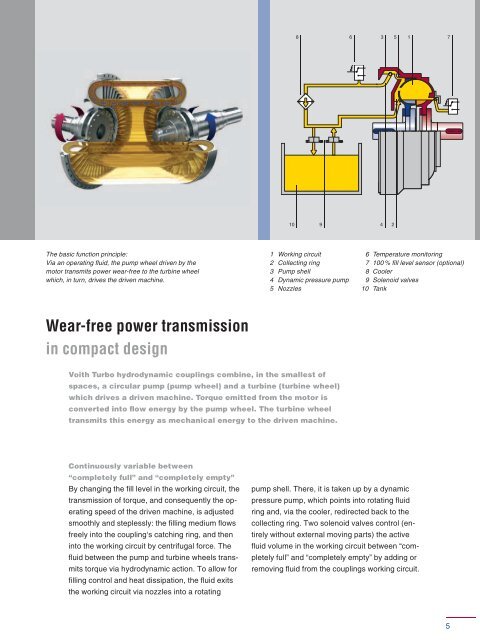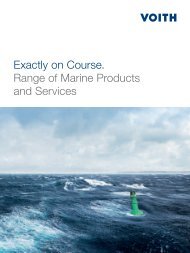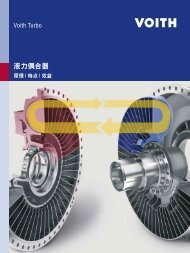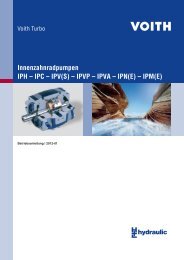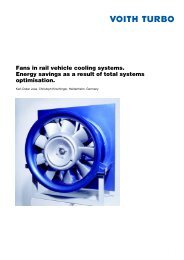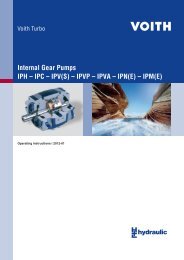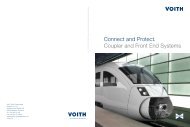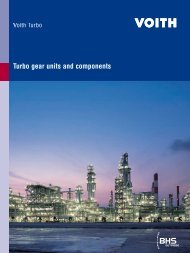Fill-controlled fluid couplings from Voith Turbo
Fill-controlled fluid couplings from Voith Turbo
Fill-controlled fluid couplings from Voith Turbo
Create successful ePaper yourself
Turn your PDF publications into a flip-book with our unique Google optimized e-Paper software.
The basic function principle:<br />
Via an operating fl uid, the pump wheel driven by the<br />
motor transmits power wear-free to the turbine wheel<br />
which, in turn, drives the driven machine.<br />
Wear-free power transmission<br />
in compact design<br />
<strong>Voith</strong> <strong>Turbo</strong> hydrodynamic <strong>couplings</strong> combine, in the smallest of<br />
spaces, a circular pump (pump wheel) and a turbine (turbine wheel)<br />
which drives a driven machine. Torque emitted <strong>from</strong> the motor is<br />
converted into fl ow energy by the pump wheel. The turbine wheel<br />
transmits this energy as mechanical energy to the driven machine.<br />
Continuously variable between<br />
“completely full” and “completely empty”<br />
By changing the fi ll level in the working circuit, the<br />
transmission of torque, and consequently the operating<br />
speed of the driven machine, is adjusted<br />
smoothly and steplessly: the fi lling medium fl ows<br />
freely into the coupling‘s catching ring, and then<br />
into the working circuit by centrifugal force. The<br />
fl uid between the pump and turbine wheels transmits<br />
torque via hydrodynamic action. To allow for<br />
fi lling control and heat dissipation, the fl uid exits<br />
the working circuit via nozzles into a rotating<br />
10<br />
8<br />
1 Working circuit<br />
2 Collecting ring<br />
3 Pump shell<br />
4 Dynamic pressure pump<br />
5 Nozzles<br />
9<br />
6 3 5 1<br />
7<br />
6 Temperature monitoring<br />
7 100 % fi ll level sensor (optional)<br />
8 Cooler<br />
9 Solenoid valves<br />
10 Tank<br />
pump shell. There, it is taken up by a dynamic<br />
pressure pump, which points into rotating fl uid<br />
ring and, via the cooler, redirected back to the<br />
collecting ring. Two solenoid valves control (entirely<br />
without external moving parts) the active<br />
fl uid volume in the working circuit between “completely<br />
full” and “completely empty” by adding or<br />
removing fl uid <strong>from</strong> the <strong>couplings</strong> working circuit.<br />
4<br />
2<br />
5


